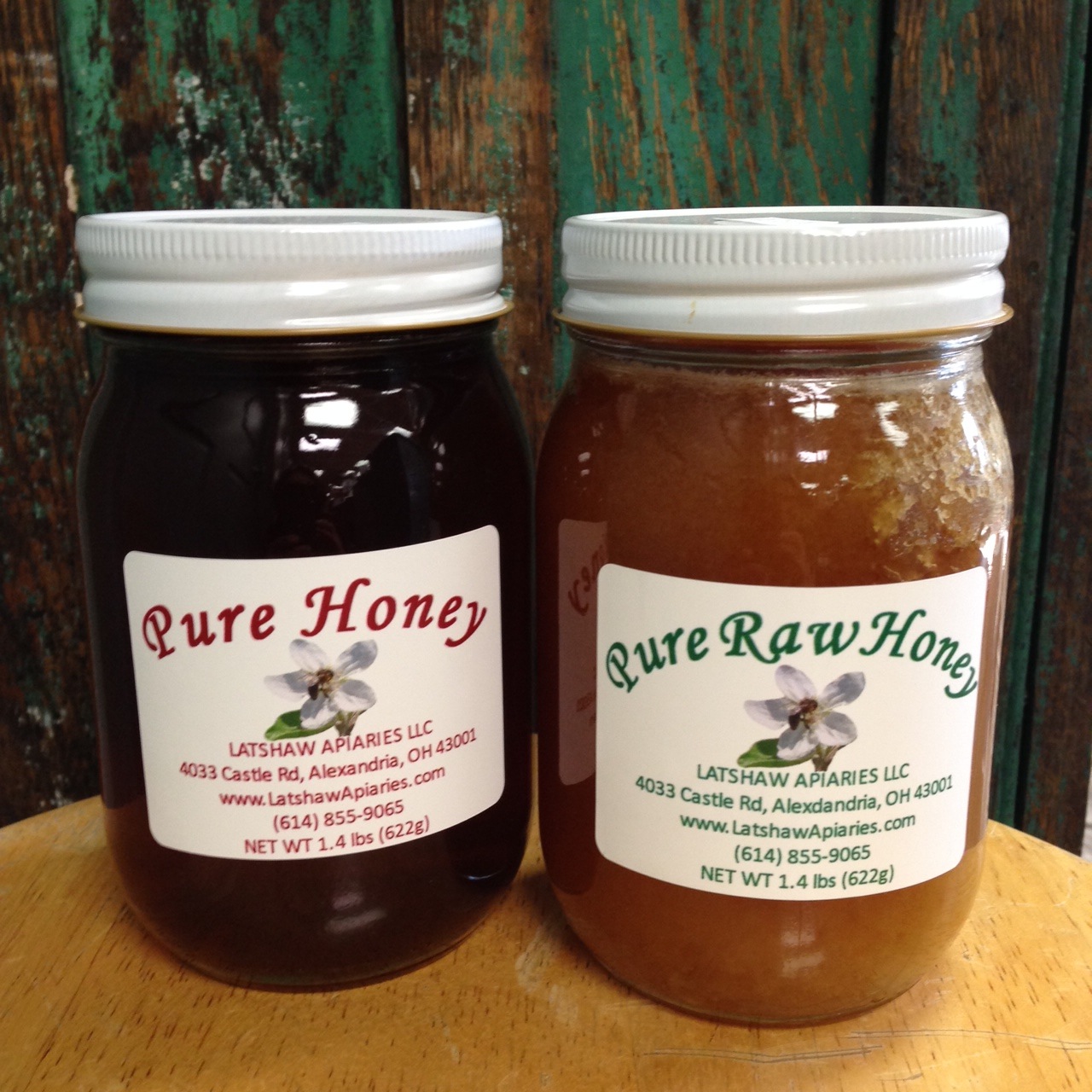 Why doesn’t all honey look the same?
Why doesn’t all honey look the same?
The appearance of honey is quite variable. It can be almost water
white to a dark amber color. The nectar collected from flowers blooming
in the area determines the color of the honey. Here in central Ohio it
is not common to have honey from one single nectar source. (Of course
there are exceptions such as heavy locust bloom or in areas of dense
plantings.) Instead, “wildflower” honey tends to be most common.
Wildflower honey comes from a variety of nectar sources including common
sources such as dandelion, fruit trees, black locust (acacia), clover,
alfalfa, and many others. Because we extract honey at different times
during the beekeeping season, every crop of honey is different in color
and taste. It makes it exciting to see what the honey will look and
taste like each time!
 What is the difference between strained honey and raw honey?
What is the difference between strained honey and raw honey?
Our liquid honey – labeled as “pure” honey – has been gently warmed
and strained. This serves to remove any debris or wax pieces from the
honey. It also helps to keep the honey liquid longer. This straining
however does not remove the microscopic pollen pieces that are naturally
present in pure honey. While this pure honey will stay liquid longer,
all honey eventually crystallizes. The crystallization is a natural
process and simply a different form of honey – kind of like water and
ice. Crystallized honey can easily be liquefied by warming it gently,
preferably in a pan of warm water. Never boil honey as this changes
color, taste, and nutritional value.
There is actually no industry-agreed upon definition for “raw” honey
so it is always best to ask your beekeeper. At Latshaw Apiaries we
label honey as raw if it has not been heated or filtered. This raw
honey generally crystallizes very quickly. It can be softened or
liquefied if heated gently. Raw honey will sometimes have visible
specks of other materials as well. These can be small pieces of wax,
propolis, or even pollen that add to the appeal of the “raw” honey to
some users. Local raw honey is often recommended for allergy sufferers.
Interesting honey facts:
Researchers at Texas A&M University are leaders in the field of
melissopalynology (the study of pollen in honey). Their research has
shown 75% of honey available in grocery stores does not contain pollen.
Honey has antimicrobial properties which make it effective as a
dressing for wounds. It has also been found to be successful at
relieving sore throats.
Habitat loss, insecticides, diseases, and mites are having a
significant impact on the health of honey bees. In recent years some
areas of Ohio have reported losing upwards of 80-90% of their honey bee
colonies after winter.

Latshaw Apiaries
is family operated by Joe, Leah, and Jacob Latshaw in Alexandria, Ohio.
They work with their bees to make them healthy and strong, and conduct
their own research to learn how to best tend bees in the central Ohio
climate. Latshaw Apiaries focuses on the production and development of
highly productive and well-adapted honey bees for beekeepers across the
United States and strives to perfect and improve the instrumental
insemination of queen honey bees through constant research and
development. Dr. Joe Latshaw specializes in the design and production of
instrumental insemination equipment used by researchers and beekeepers
around the world.
You can find the Latshaws at the Granville Farmers Market.
 Why doesn’t all honey look the same?
Why doesn’t all honey look the same?

